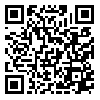Volume 15, Issue 14 (10-2017)
RSMT 2017, 15(14): 13-22 |
Back to browse issues page
Download citation:
BibTeX | RIS | EndNote | Medlars | ProCite | Reference Manager | RefWorks
Send citation to:



BibTeX | RIS | EndNote | Medlars | ProCite | Reference Manager | RefWorks
Send citation to:
Mohammadi Sanjani F, Shojaei M, Daneshfar A. Effect of practice variability on anticipatory postural control during reaching task. RSMT 2017; 15 (14) :13-22
URL: http://jsmt.khu.ac.ir/article-1-232-en.html
URL: http://jsmt.khu.ac.ir/article-1-232-en.html
, f.m.sanjani@gmail.com
Abstract: (6737 Views)
Introduction and purpose: Reaching movement is one of the common task for assessing learning mechanism and is daily task in human life, improvement in postural stability can influence the function of this task. In this term, the aim of current study was to compare constant (simple reaction time) and variable random practice (choice reaction time) on the improvement of anticipatory postural adjustment during reaching task in healthy people. Methodology: Sixteen right handed women with the mean age of (27.18±3.18) participated in this study. For measuring magnitude of anticipatory postural control, centre of pressure displacement and centre of pressure velocity were evaluated by using force plate before reaching movement. Results: The results of mixed variance analysis in significant level of p<0.05 showed that random variable practice increased cop displacement and velocity before reaching task, but this increase wasn’t significant in acquisition and retention tests. Discussion and Conclusion: Therefore according to the results of this study, random variable practice improved anticipatory postural adjustment. Based on these results, effect of this practice on anticipatory postural control can be considered in rehabilitation programs.
Type of Study: Research |
Received: 2016/10/27 | Accepted: 2017/04/17 | Published: 2017/10/7
Received: 2016/10/27 | Accepted: 2017/04/17 | Published: 2017/10/7
References
1. Magill, R., Anderson, D. (2013). Motor learning and control: concepts and applications. (10th Ed.). New York: McGraw-Hill
2. Dusing. S., C, Harbourne, R. T. (2010). Variability in postural control during infancy: Implications for development, assessment, and intervention. Physical Therapy. 90:1838-49.
3. Latash, M. (2013). Fundamental of motor control. (1th Ed). Science Direct.
4. Bernstein, N.A. (1967). The coordination and regulation of movement Oxford: pergamen.
5. Dufossé. M., Hugon. M., Massion, J. (1985). Postural forearm changes induced by Predictable in time or voluntary triggered unloading in man. Experimental Brain Research. 60(2):330-4.
6. Massion, J. (1992). Movement, posture and equilibrium: interaction and coordination. Progress Neurobiology. 38:35-56.
7. Cordo, P.J., Nashner, L.M. (1982). Properties of postural adjustments associated with rapid arm movements. Journal Neurophysiology. 47:287-302.
8. Liu, W.Y., Lin, Y.H., Lien, H.Y., Hsu, L.Y., Tsai, Y.J., Lia, C.F. (2015). Within-session acquisition of anticipatory postural adjustment during forward reaching task. Clinical Neurology & Neurosurgery. 129(51):553-7.
9. Saito, H., Yamanaka, M., Kasahara, S., Fukushima, J. (2014). Relationship between improvements in motor performance and changes in anticipatory postural adjustments during whole-body reaching training. Human Movement Science. 37:69-86.
10. Kanekar, N., Aruin,. A.s., Lee, Y.J., Ganesan, M. (2015). Enhancement of anticipatory postural adjustments in older adults as a result of a single session of ball throwing exercise. Journal of Experimental Brain Research. 18:559-67
11. Le Bozec, S., Bouisset, S. (2004). Does postural chain mobility influence muscular control in sitting ramp pushes? Experimental Brain Research. 158:427-37.
12. Broadbent, D.P., Causer, P.R., Ford, M., Williams, A. (2014). Contextual interference effect in perceptual-cognitive skills training. Medicine and Science in Sports and Exercise. 47(6):1243-50.
13. Rouhollahi, V., Rozan, M., Mehratra, A. (2014). effect of different practice schedules on learning and performance in Hnadball Tas. American Journal of Sport Science. 2(4):71-6.
14. Schmidt, R. A., Lee, T. D. (2011). Motor control and learning: A behavioural emphasis. (5th Ed.). Champaign, IL: Human Kinetics.
15. Oldfield, R.C. (1971). The assessment and analysis of handedness: The Edinburgh Inventory, Neuropsychological. 9(1):97-113.
16. Duncan, pw. Weiner, D.K., Chandler. J., Studenski, S. (1990). Functional reach: A new clinical measure of balance. Journal of Gerontology. 45(6):192-7
17. Kubicki, A., Petrement. G., Bonnetblanc, F., Ballay, Y., Mourey, F. (2012). Practice related improvements in postural control during arm movement in older adults: a preliminary study. Journal of Gerontology. 67(2):196-203
18. Kaminski, T.R., Simpkins, S. (2001). The effect of stance configuration and target distance on reaching movement preparation. Experimental Brain Research. 136:439-46.
19. Sun, R., Guerra, R., Shea, J.B. (2015). The Posterior shift of anticipatory postural adjustment in choice reaction step initiation. Gait & Posture. 41(4):894-8.
20. Kanekar, N., Aruin, A.S. (2014). Improvement of anticipatory postural adjustments for balance control: Effect of a single training session. Journal Electromyography & Kinesiology. 25(2):400-5.
21. Paweles, L., Swinnen, S.P., Beets, I.A. (2014). Contextual interference in complex Bimanual skill learning leads to better skill persistence. Plos one9 (6), pp: e100906.
Send email to the article author
| Rights and permissions | |
 |
This work is licensed under a Creative Commons Attribution-NonCommercial 4.0 International License. |






